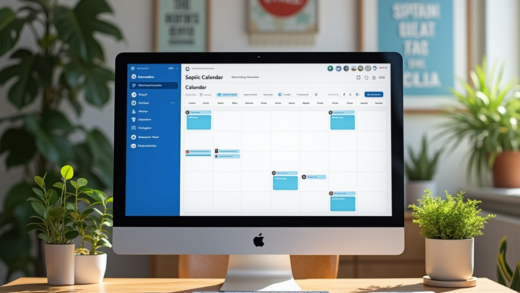In the ever-evolving landscape of digital marketing, the power of visuals cannot be overstated. As consumers are bombarded with a plethora of information daily, capturing their attention has become a formidable challenge. Marketers are now recognizing the potential of visual content to break through the noise and engage audiences effectively. Whether it’s through eye-catching graphics or compelling videos, utilizing visual formats allows brands to convey messages in an impactful way that resonates with their target demographics. Consequently, visual content marketing is not merely an adjunct to written content but a vital strategy that can elevate your marketing efforts. Its importance cannot be overlooked, as it speaks directly to the preferences of modern consumers who often favor visual stimuli.
Visual content marketing comprises various formats, each tailored to address specific aspects of consumer engagement. By leveraging different types of visual media, businesses can diversify their marketing strategies and communicate more effectively. This type of marketing facilitates a multi-sensory experience that enhances user interaction. Engaging visuals tend to evoke stronger emotional responses, encouraging users to share content within their networks. This virality is essential for modern marketing campaigns, as word-of-mouth remains a powerful driver of brand awareness. In this article, we will delve into the mechanics of visual content marketing, exploring its types, best practices, and how to measure its success.
The Importance of Visual Content

Visual content holds several crucial benefits, making it indispensable in a crowded marketing space. First, engaging visuals can significantly increase user engagement, allowing for a deeper connection between consumers and brands. Compelling infographics, vivid images, and entertaining videos invite users to interact more and invest time in the content presented. Moreover, the effectiveness of visual content lies in its ability to cater to our natural tendencies; humans are hardwired to process images quickly and efficiently. In fact, studies suggest that we can recall information paired with visuals more readily than information presented in text form alone. Thus, a strategic approach to visual content can lead to improved retention rates and ultimately drive conversions.
To elevate user engagement, brands must consider the type of visuals they present. Each form of visual content serves a unique purpose, catering to different marketing objectives and audience preferences. For example, detailed infographics can simplify complex data, making it easily digestible, while short videos can convey an engaging narrative in just a few seconds. By offering diverse types of content, businesses can cater to varying consumer preferences, ensuring there’s something for everyone. This inclusivity can foster a larger audience base, increasing the likelihood of shares and interactions across different platforms. The way users engage with your visual content can transform how your brand is perceived in the market.
Types of Visual Content

Exploring diverse formats of visual content can illuminate the many ways marketers can reach their target audiences effectively. Each visual content type has its strengths, and integrating them into your marketing strategy fosters a rich content landscape. The following are some essential types of visual content that can be beneficial for brands:
- Infographics: These are powerful tools for distilling complex information into easily digestible graphics, conveying critical messages at a glance.
- Videos: Whether it’s short clips for social media or longer videos for YouTube, video marketing is invaluable in today’s digital ecosystem.
- Images and Graphics: High-resolution images and custom graphics can narrate brand stories and evoke emotions effectively.
- Memes and GIFs: These formats inject humor into content, making it shareable and highly relatable for casual audiences.
Including a variety of these formats can cater to different audience segments and enhance overall engagement rates. To visualize the effectiveness of different formats, consider the following table:
| Visual Content Type | Advantages | Best Platforms |
|---|---|---|
| Infographics | Simplify complex data | Blogs, Pinterest |
| Videos | High engagement and shareability | YouTube, TikTok |
| Images | Strong aesthetic appeal | Instagram, Facebook |
| Memes/GIFs | Encourage virality | Reddit, Twitter |
Best Practices for Visual Content Marketing
To maximize the potential of visual content marketing, implementing best practices is essential. Being consistent with branding across all visual mediums creates a cohesive experience for consumers. It’s vital to ensure that every visual aligns with your brand’s identity and messaging. This consistency aids in recognition and recall, allowing users to associate quality visuals with your brand. Furthermore, optimizing visuals for SEO is crucial for discoverability. Utilizing alt tags and appropriate descriptions enhances accessibility and can improve organic traffic. Keeping content relevant and aligned with current trends ensures that your visuals resonate with your target audience.
Measuring the Success of Visual Content
Understanding how to measure the effectiveness of visual content is critical for making informed adjustments to your marketing strategies. Implementing the right metrics can provide insights into user engagement and content performance. Some key metrics to track include:
- Engagement Rates: Analyze likes, shares, and comments to assess how audiences interact with your visual content.
- Share Metrics: Track how often content is shared across various platforms to gauge its virality.
- Conversion Rates: Monitor the percentage of users who take desired actions after interacting with visual content, such as signing up or making a purchase.
Consider using advanced tools like Google Analytics and social media insights to delve deeper into the performance of your visual content. By evaluating these measurements, marketers can not only understand what works but also refine their strategies for future campaigns.
Conclusion
Visual content marketing extends far beyond traditional blog posts, creating innovative ways to engage with audiences. By understanding its importance and utilizing a range of visual formats, brands can enhance their storytelling and foster connections with their target demographics. Additionally, adhering to best practices while measuring success helps marketers navigate the ever-changing landscape of consumer preferences. With visual content becoming increasingly integrated into the fabric of digital marketing, brands that embrace this medium will not only stand out but also effectively resonate in an increasingly crowded market.
Frequently Asked Questions
- What is visual content marketing? Visual content marketing involves using images, videos, infographics, and other visual formats to engage audiences and convey messages effectively.
- Why is visual content important? Visual content captures attention quickly, enhances engagement, and improves information retention, making it a valuable tool for marketers.
- What types of visual content should I use? You can use a variety of formats, including infographics, videos, images, graphics, memes, and GIFs, depending on your target audience and marketing goals.
- How can I measure the success of my visual content? Key metrics to track include engagement rates, shares, conversion rates, and user feedback, along with tools like Google Analytics for detailed analysis.
- What are some best practices for creating visual content? Consistent branding, optimizing for SEO, and ensuring relevance to your audience are essential best practices to follow.


